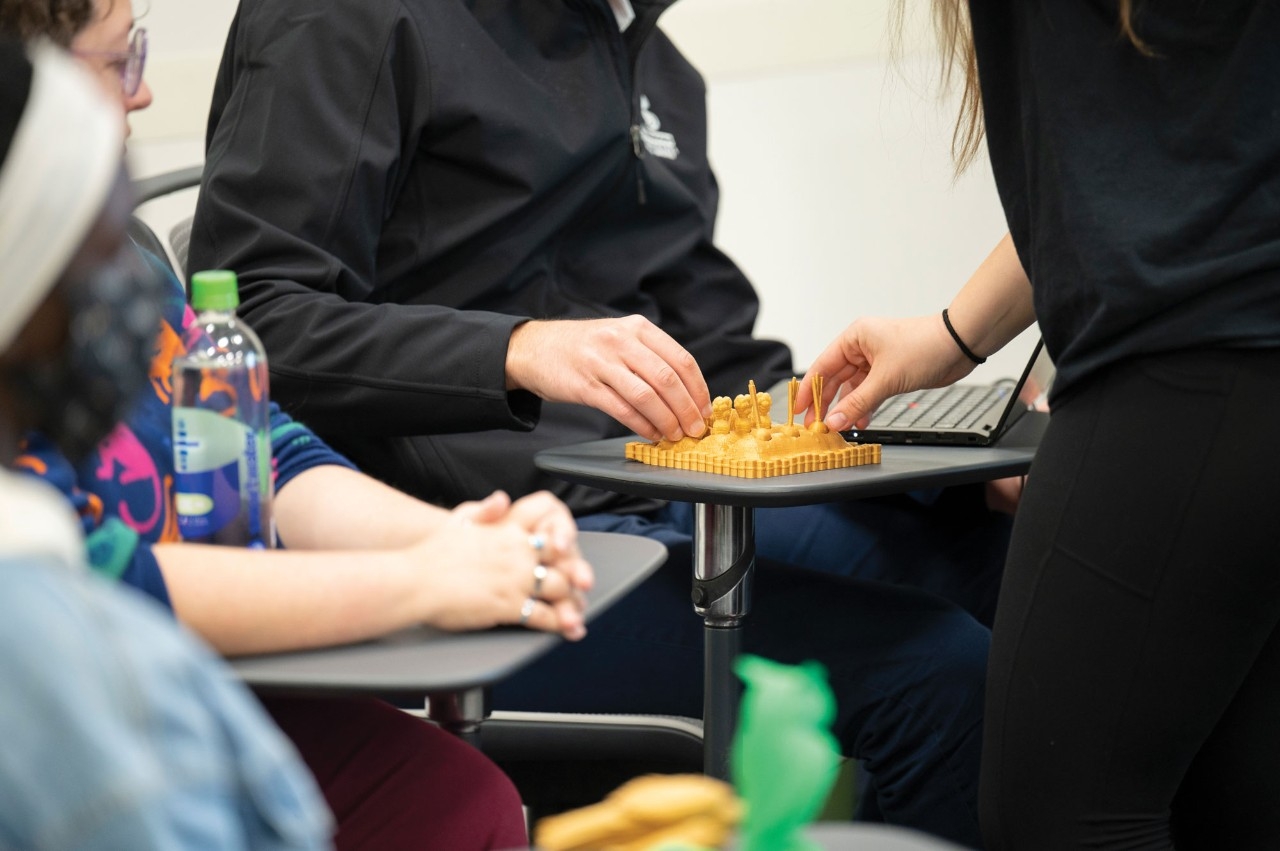Partnering with Cincinnati’s Clovernook Center for the Blind & Visually Impaired, HNR 330 students are bringing children’s books to life using makerspace technology.
When an author’s use of imagery allows readers to envision a scene clearly in their minds, we say it leaps from the page. In Dr. Tamara O’Callaghan’s HNR 330 course titled “Build a Better Book,” students create books in which illustrations quite literally do bring tales to life using 3D printing technology. Partnering with Cincinnati’s Clovernook Center for the Blind & Visually Impaired, members of the class are publishing their own story books in braille, designing accompanying objects for readers to hold and donating their finished products to students across Africa.
On Nov 1., four teams of students presented prototypes of their projects to Samuel Foulkes, Clovernook’s director of braille production and innovation. Each small group started with text from the African Storybook initiative—a database of free-to-use children’s stories in African languages—and adapted them to become tactile books: a format for visually impaired readers that uses held 3D objects in place of illustrations. Among the students’ plastic creations were a miniature wheelchair, an egg that could be split open to house baby chicks and individual pieces of fruit in a basket. The groups were also in the process of devising ways that these objects could trigger MP3 files of chirping birds or dialogue to make their stories even more immersive.
All of these supplementary tools were made at Stego Studio, the makerspace in Steely Library’s second floor, with the help of the space’s coordinator Samantha Geiger (‘16). Many of the designs were sourced from Thingiverse, an online library of open-source 3D models, but some, like a highly realistic banana, were scanned from actual objects using the studio’s tabletop scanner.
According to Dr. O’Callaghan, the partnership between Clovernook and her class largely came about through serendipity. She first became interested in 3D printing as a literacy tool after hearing about the University of Colorado’s Build a Better Book initiative, which used makerspace tools to introduce STEM concepts to young students. Designing her own course in a more humanities-focused direction, O’Callaghan’s initial idea for the course asked how technology could help make reading a more immersive experience.
“NKU can continue to support us by doing exactly what you’re doing,” Foulkes told the class. “It’s invaluable at Clovernook. It’s mostly just my time spent working on this initiative, and there’s no way we could chase down all of these types of development and resources by ourselves. Continuing that work saves our agency so much time and provides us with lots of fresh, innovative ideas.”

